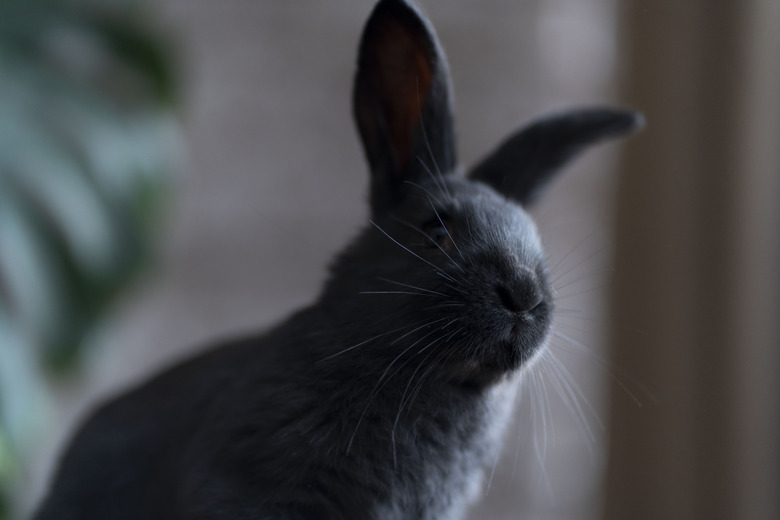How Do I Know My Rabbit Is In Heat & Ready To Breed?
When trying to breed your rabbit, timing is important. You need to know when is best to introduce a male and female to have the best chance of breeding successfully and to avoid either rabbit getting hurt. A female rabbit doesn't have a regular heat cycle, so you need to pay attention to her behavior to know when a female rabbit is in heat. This can also help you figure out whether mating was successful.
Female rabbit in heat
Female rabbit in heat
When some animals are in their ovulation stage, it's described as going into heat. Rabbits don't go into heat. They're induced ovulators, which means ovulation is triggered by mating. Without an opportunity to mate, a female rabbit will become receptive at different rates as new ovarian follicles mature after old ones regress.
During the spring and summer, a female rabbit will be receptive for anywhere between five and 14 days. After that, she will be nonreceptive to a potential mate for two days. This cycle will repeat until she successfully mates. This activity will decline during the fall and winter seasons.
Receptive vs. nonreceptive
Receptive vs. nonreceptive
When you introduce a female rabbit (a doe) to a potential mate (a buck), there are behavioral signs that will tell you whether she's receptive or nonreceptive. Since both male and female rabbits are territorial, the introduction should either happen in a neutral place or in the buck's enclosure. Once they've been introduced, the buck follows the doe around, humming, sniffing, and licking the female. He may even spray her with urine.
If the doe is receptive, she will hop around or flatten herself to the ground. If the doe is nonreceptive, she might run away, yell, or bite the buck. During mating, the buck grabs the doe by the back of the neck and thrusts vigorously for a short period of time until ejaculation occurs. After ejaculation, the buck lets out a loud squeak and then flops over on his side or back.
Successful mating test
Successful mating test
To ensure successful mating, some breeders encourage a second attempt at mating before returning the doe to her cage. The doe might refuse a second mating. If she does, try mating her with another buck or wait for two to four days before trying to mate her again. If she still isn't receptive, this may indicate that she has been successfully mated. Always supervise a buck and doe in one cage. Otherwise, they could get into a fight and hurt each other.
Potential problems while breeding
Potential problems while breeding
Sometimes, a female experiences something called pseudopregnancy. This is when a female believes she is pregnant and exhibits signs of pregnancy but isn't actually pregnant. This can happen if mating was unsuccessful, if the buck was sterile, or simply after being mounted. This can delay the breeding process because during the 17 days a pseudopregnancy usually lasts, a doe will refuse to breed and may even start to nest. Aside from delaying breeding, this is normal behavior. Any indicator that a rabbit is unhealthy can impede breeding. If you want to breed your rabbit, peak physical health is important.
Common factors that can inhibit breeding are:
- Excess weight
- Old age
- Laziness
- Illness
- Underactive libido
